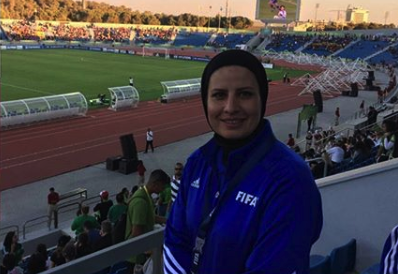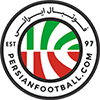Playing football as a woman in Iran is an achievement in itself: Maryam Azmoun

Times of India – BHUBANESWAR, All over the world football is a game fought between two teams on the pitch but that is not the case with Iran women’s football team. For close to four decades now, they have been mostly fighting off the pitch for survival.
As is the case with many countries around the world these days, Iranian women’s football went backwards, or close to being non-existent, following the Islamic Revolution in 1979. Football had been widely played before the revolution but strict laws that subjected women to wear
FIFA imposed a ban on playing with the hijab all of a sudden in 2011. However, armed with the mental strength to fight the odds and an educated coach-cum-activist Katayoun ‘Kat’ Khosrowyar as the leader driving change, Iranian women are ready to continue their struggle for the empowerment of women through sport.
Already into the second round of 2020 Olympic qualifiers, a historic feat for the national side which came into being after 2005, the Iran team is here to participate in the four-nation Gold Cup being held at Kalinga Stadium, under the guidance of senior team coach Maryam Azmoun. On the sidelines of their practice session on Wednesday, Maryam spoke to TOI, with team doctor Farinaz Fahimipour doubling up as the translator, about the difficulty in sustaining and developing women’s football in Iran.
“Playing football as a woman in Iran is in itself an achievement as we have been going through a lot of changes socially and politically for the last four decades. Situations are definitely improving but there’s still a lot to be done to take women’s football to somewhere close to where our men’s football is,” said Maryam. “They (men) are playing at the top level professionally for long. Some even play outside the country, in many European leagues, so they are up there. But for women, even though we have a senior football league we don’t have any age-group domestic league. So it’s really difficult to scout players for the national side. And sometimes even the senior league is stopped because of many issues ranging from political to financial. So we are happy to be where we are now (with FIFA ranking of 60).”
Though society as such is not against women playing football, the fundamentalists and the judiciary at home and FIFA officials in Zurich have been alternatively unfavourable to women’s involvement in football, be it playing or watching a game live inside the stadium. Through movements such as ‘Open Stadiums’ and ‘Let us play’, which have made headlines globally, Iranian women have fought a pitched battle off the turf, which led to a landmark decision by the Iranian government allowing women to enter Azadi Stadium in Tehran, to watch the AFC Champions League final second-leg tie between local side Persepolis and Japanese club Kashima Antlers, in November last year.
“There were also reservations about mixing of men and women in a women’s team set-up, so we used to lose knowledgeible males from team management. Men have been attached to top-level football for long, naturally there are more experienced and football-literate men than women in Iran. Women are being educated gradually and it’ll take time before we get a good number of properly sports-literate women on the coaching staff. So sports management and education is necessary to take things forward,” Maryam explained.
No talk about Iranian women’s football is complete without the mention of American-born-Iranian Katayoun, the current under-19 women’s coach. Maryam explained the importance of Kat (as they call her in Iran) in changing the fate of the women’s game.
“We owe a lot to Kat, actually she is the person mostly responsible for wherever we are and whatever we have right now. She has acted like a catalyst to women’s football in Iran. She is young (barely in her early 30s), had the education and came to Iran for the love of motherland. She played for the country first and then took up the cause of women’s football. She led the movement to overturn FIFA’s ban on hijab and now coaches the U-19 side.
“She (only woman from the middle-east to have a FIFA A licence) shares her knowledge with us constantly and helps all the age group teams, be it U-14, U-16 or the senior side. For sure our women’s football wouldn’t have been the same without Kat,” Maryam signed off.




